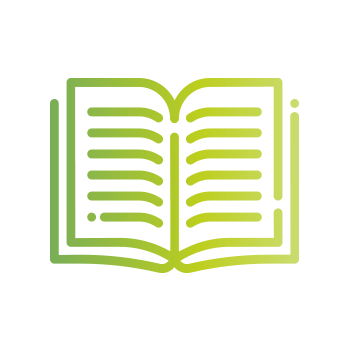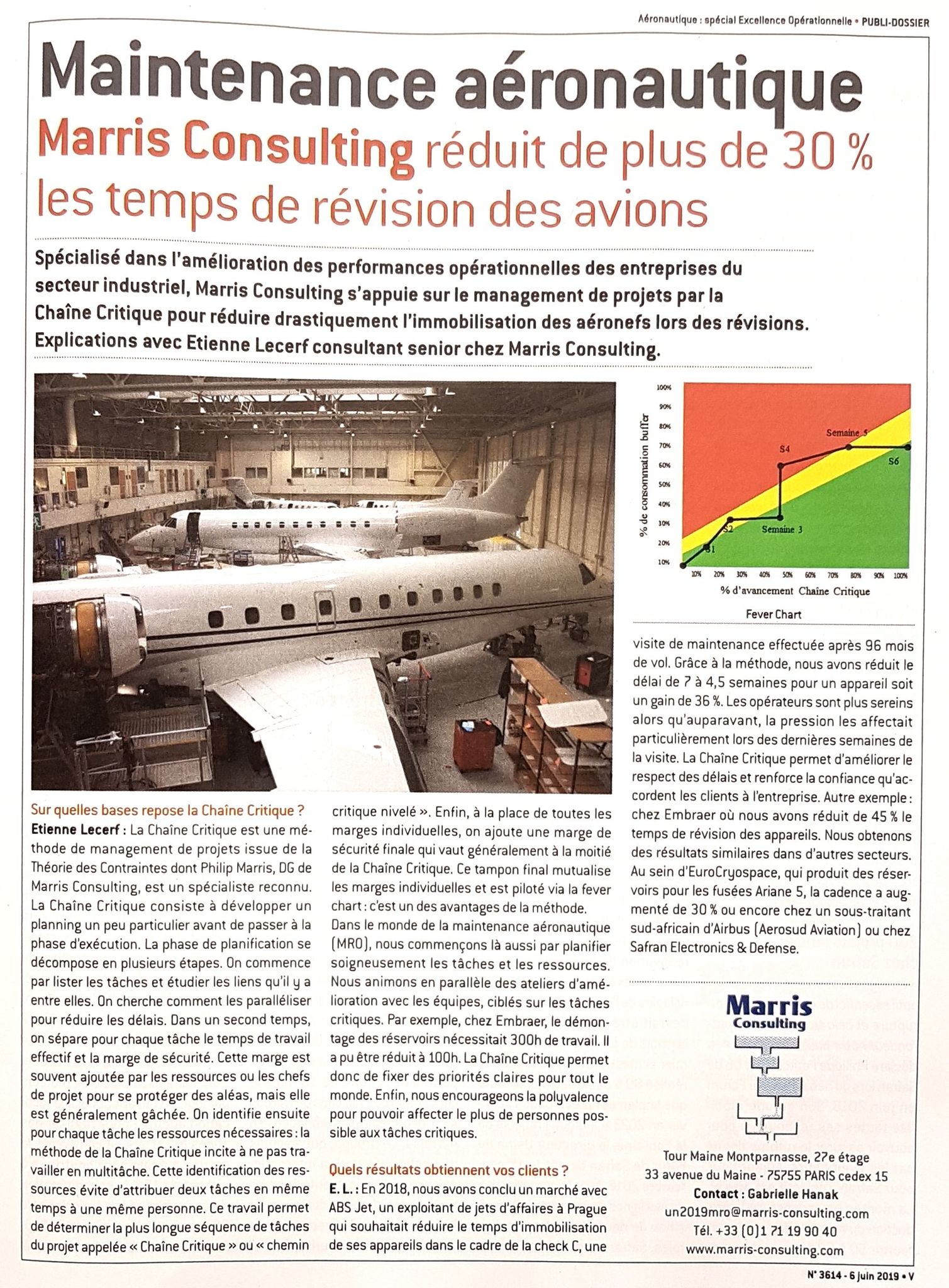Publications
- Home >
- To go further >
- Publications >
- 'Usine Nouvelle' article- Aeronautical Maintenance
Marris Consulting Reduces Aircraft Overhaul Time by More Than 30%

Article in the French weekly magazine L'Usine Nouvelle (#1 in industry), June 2019.
Specialized in improving the operational performance of companies in the industrial sector, Marris Consulting applies Critical Chain Project Management to drastically reduce aircraft Turn-Around-Time during maintenance.
Etienne Lecerf, Senior Consultant at Marris Consulting is interviewed by l'Usine Nouvelle.

Find the article online on the website of Usine Nouvelle
What is the basis of the critical chain?
Etienne Lecerf: Critical Chain is the project management technique of the Theory of Constraints, of which Philip Marris, CEO of Marris Consulting, is a recognized specialist. The Critical Chain consists in developing a special type of schedule before moving on to the execution phase. The planning phase is broken down into several stages. We start by listing the tasks and studying the links between them. We are looking for ways to parallelize them to reduce durations. In a second step, the actual working time and the safety margin are separated for each task. This margin is often added by resources or project managers to protect against problems, but it is usually wasted. Then we identify for each task the necessary resources. Critical Chain discourages multitasking. This identification of resources avoids assigning two tasks at the same time to the same person. This planning is used to determine the longest sequence of tasks for the project called "Critical Chain" or "Leveled Critical Path". Finally, instead of having individual margins at a task level, a final safety margin - a buffer - is added, which is usually equivalent to about half the duration Critical Chain. This final buffer pools the individual margins and is controlled with the "Fever Chart" which is one of the key tools of this way of managing projects.
In the world of aeronautical maintenance (MRO / Maintenance Renewal and Overhaul), we also start with a precise planning of tasks and resources. In parallel, we run improvement workshops with the teams, focused on critical tasks. For example, at Embraer, dismantling the bladder fuel tanks initially required 300 hours of work. It was reduced to 100 hours. By referring to the Fever Chart, Critical Chain makes it possible to set clear priorities for everyone.
What results do your customers get?
E.L.: In 2018, we concluded a contract with ABS Jet, a business jet operator in Prague who wanted to reduce the Turn-Around-Time of its aircraft during C Checks, a maintenance visit after 96 months of flight. Thanks to the Critical Chain approach, we reduced the time from 7 weeks to 4.5 weeks for a plane, an improvement of 36%. Furthermore, as a result, the mechanics are less stressed, whereas before, the pressure built up progressively as the work progressed and the end date approached. The Critical Chain helps to greatly improve on time completion and significantly improves customer confidence in the company. Another example is Embraer, where we have reduced the overhaul aircraft Turn-Around-Times by 45% while simultaneously increasing the productivity of the mechanics by over 60%. We have similar results in other sectors: for example in EuroCryospace, which produces the first stage of the Ariane 5 rockets, the production rate was increased by 30%; or in a South African subcontractor of Airbus (Aerosud Aviation) or again at Safran Electronics & Defense.

